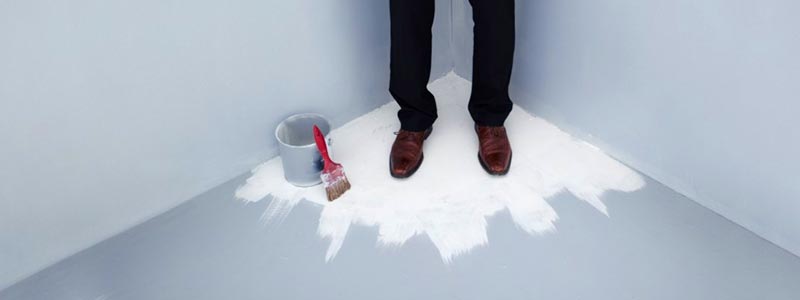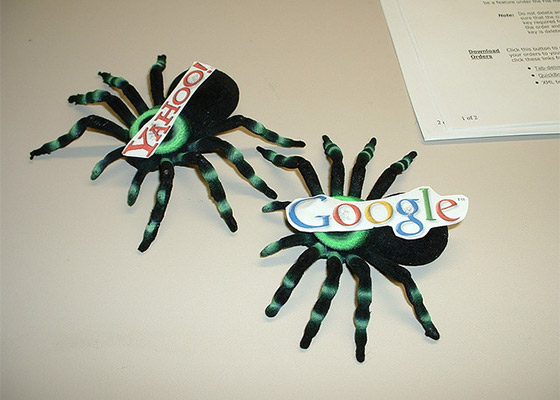
By Michael Georgiou, from InstantShift – http://bit.ly/109UEXa
Today, every web designer, developer, marketer and business owner is aware of the significance of ranking high on search engines. A high rank on SERPs of Google, Yahoo and Bing will help people find your website organically through search engines. Ranking on the first page on search engine results can bring traffic and conversions, which will improve business profitability.
Now, let’s consider you already have an SEO-optimized business website that is bringing high amounts of targeted traffic to your site.
Now what if you decide your site needs a redesign for certain reasons (you are launching a new product or you want to make your site mobile-friendly)?
One of the biggest concerns you will face when you make this decision is the fear of losing your existing search engine ranking. However, this does not mean you should not consider redesigning your site. A fresh new well-designed site has the potential to attract more customers and make a positive impression on them.
To redesign an effective site that ranks well on search engines, you need to avoid making some web design mistakes.
Here is the list of web design mistakes that should be avoided to preserve the SEO credits of an existing website while redesigning your website:
1. Not including or Over-Using Keywords in Content

Image credits: flickr
This is a critical mistake often made by web designers while redesigning a site. In an attempt to make content more readable and engaging for their audience, they at times forget about including keywords in the content.
If the existing site is well-optimized and already attracting targeted visitors, you’ll need to be extra careful about the content that you change during redesign. In this case, you may want to stick with your old content thinking updating content may negatively affect your site rankings, but this is not true. Rewriting some of your content to convert visitors into leads is a good idea as long as it does not affect your site rankings.
However, if the content of the site was not previously optimized for SEO, it’s vital that a web designer collaborate with the SEO and content writing team to come up with SEO optimized content for the redesigned site.
Your site content should include targeted keywords to get ranked on page one. Google AdWords Keyword Planner tool can help find keywords people generally use on search engines to find similar products or services. Search engines will find your content through these keywords and show your website to the user looking for that information.
The other common mistake made by web designers with keywords is to over-use them to rank high on search engines. Keyword stuffing is considered a black-hat tactic. Google will penalize your site if they catch you stuffing content with keywords resulting in your site demoted in rankings or worse, removed all together from SERPs.
While keyword research and optimization is largely the prerogative of SEOs, as a designer you are in charge of the website’s design and content has a huge role to play. It is an important web design element, and you need to take charge of it.
2. Affecting User-Experience By Using Web Design Tactics That Increase Load Time

Image credits: flickr
‘Slow and steady wins the race’ – You must have heard this phrase millions of time in your life, but applying this phrase to your redesigning efforts will be the worst mistake you can commit. Google, a search engine giant uses site speed as a factor in its search ranking algorithms. A slow loading page will frustrate your visitors and they may abruptly leave your site without checking its other pages or taking some action; worse, they may never return to your site again.
Plenty of research studies have proved that you have got only a few seconds before visitors leave your site. And if those few seconds are lost in page loading, you have lost the chance of attracting and grabbing your visitors’ attention. A slow page load time negatively impacts the web experience of visitors and turns them away; this ultimately leads to a decrease in your rankings and site traffic.
To rank better, reduce the page load time by removing unnecessary web design elements like flash or frames that increase the loading time of the page.
An increasing number of people today are using internet-enabled small devices like tablets or smartphones to access the Web. But if your site is not mobile-friendly, it will take longer to load on mobile devices; this will frustrate your mobile audience no end. So, either make sure you have a separate site for your mobile audience or your site is responsive; this will decrease your site’s loading time on mobile devices.
3. Not Optimizing Images for Search Engine Spiders

Image credits: flickr
Googlebot, Google’s main crawler cannot see images or text embedded images. So, not optimizing images for search engines is a website redesign mistake that can easily bring down your rankings.
In order to generate the most relevant search results, crawlers need to have a huge store of accurate information about all your web pages. This includes information about the images that are embedded in your page. By not optimizing your images, you are stopping crawlers from doing their job; you thereby risk having your pages left un-crawled and un-indexed. On the other hand, if you optimize all your images, you maximize chances of ranking better in search engine index.
Every image that you add on your new website needs to have ALT text to ensure search engine robots that crawl your site can understand your site’s images and also provide SEO for Google image searches.
Matt Cutts, the head of Google’s web spam team in the video (Importance of ALT Tags) talks about how providing useful and accurate information in your ALT attributes can make your photos and pictures more discoverable on the web.
Apart from the SEO benefit, the alt attribute also adds text alternative to images for visitors when a browser can’t properly render them. Hence, adding appropriate and keyword-rich alt tags to the images on your website will provide good user-experience and also help your website achieve better rankings on search engines.
Avoid keyword stuffing your alt tags as search engines may penalize you for over-optimization.
4. Changing Website Navigation
A navigation that is properly designed and organized is important both for visitors and search engines. Changing the site’s main navigation system can have major short term and long term SEO consequences.
Post website redesign, if your website is not easy to navigate, visitors will undoubtedly abandon your site.
Your visitors might have a certain level of comfort with accessing your web pages (previous site) in a certain way and if all of a sudden they find some major changes in your site’s navigation, they will find it difficult to navigate your site easily. In this case, they may leave your site and turn to your competitor’s site. This bounce rate will affect your search rankings.
So, even if your navigation undergoes a makeover, make sure essential categories are easily visible and your new website is very easy to use for your visitors.
Your business might have evolved since you last redesigned your site. This may require you to add new pages or remove some pages from your site; this can lead to some changes in your navigation menu. Changing your site’s navigation menu, for instance from drop-down menu to hamburger menu can cause your website to look completely different to search engines if the spiders can’t follow the links easily.
Google recommends having a site with clear site hierarchy.
5. Changing URL Structure without Informing Search Engines
When you redesign your site, there’s a good chance that you will be required to change URLs. However, if the URL you are changing attracts significant amount of targeted visitors, you won’t want to lose that link equity. Additionally, you don’t want links pointing to an obsolete URL.
But you can move the whole website or parts of it to a new location as far as you are informing the search engines of the changes you are making. One of the cardinal sins of a web redesigning process is to change URL structure without informing search engines about the change. This step will make you lose all the equity built by the old URL; this lowers your ranking on search engines and drops your organic search traffic.
To help search engines understand your new site structure better, it’s therefore, vital that you inform the engines where those older URL’s have moved to.
The 301 redirect is the most efficient and search engine-friendly method for webpage redirection. If you’re moving your content to an entirely new domain, use the Change of Address option under site configuration in Google Webmaster Tools.
Make sure to check if the new location is crawlable by Googlebot using the Fetch as Google feature.
6. Not Keeping Any Existing Social Integration Functionality Intact

Despite Google’s Matt Cutts stating that Facebook and Twitter are not part of Google search ranking algorithm, research proves otherwise. Google isn’t using raw likes or retweets to rank webpages but there is evidence to suggest that social platforms do pass on other SEO benefits.
Social signals are having a profound impact on how sites are ranking on SERPs. This makes it clear that if by any chance you forget to incorporate social media buttons on your site, it will badly impact your organic search rankings.
Social media activity can help increase awareness of a brand or website content. This brand exposure can lead to links. This means if social icons are incorporated on website, your site will show up in search results.
Let’s understand the impact of social signals on SEO with an example. Let’s say a digital camera brand tweets a tip regarding the use of digital cameras which gets retweeted a few times. One of those tweets is seen by a Twitter user that runs a high-authority blog on cameras. Now, if the blogger in his blog mentions about this tip with a backlink to the brand’s website, a backlink is generated for the site from a high-authority blog which would have not been possible without the tweet.
This example clearly shows the impact of social signals on SEO.
If you want to rank higher on Google, social media simply has to be a part of your website. Promote your Facebook page, Twitter account and Pinterest board by prominently featuring social buttons of each of these social platforms on all your site’s pages.
7. Forgetting to Cross-Link Your Pages
The simplest way to rank high on search engines is to ensure your pages get easily crawled and indexed by search engines. Cross-linking between pages is a popular technique to get easily crawled and also increase your page rank.
While redesigning a site, web designers, at times, forget to cross-link pages or to link all web pages to the home page. This web design mistake can negatively affect rankings.
Internal cross linking among your relevant pages will help your visitors navigate your site more easily and discover more content. This will make them spend more amount of time on your site and reduce your bounce rate; this also shows search engines that your site is liked by visitors as they spend a long time on your site. Cross linking will also help boost other pages within your site by allowing some link juice to pass on to the linked pages.
8. Having Duplicate Content
If multiple URLs load the same webpage, it will be considered as content duplication by Google. The problem with duplicate content is that search engines can’t decide which content to index, eventually not showing this web page in search results.
For instance: If http://www.instantshift.com and http://www.instantshift.com/home, both these URLs have the same content, Google will consider it duplicate content.
Not implementing canonical tag for multiple pages that have the same content but different URLs will thus impact your current rankings on Google. So, ensure you implement canonical tag for such URLs to help search engines know which page to index and assign link equity to.
A Word of Advice:
What already works in the old site with respect to SEO and user experience should not be removed in the new site design.
In a nutshell, search engines love websites that are easier to crawl and index. So, keep these points in mind while redesigning your site to avoid hurting your ranking and to fully optimize your new site for search engines for better conversions.
Something else you need to understand is that contemporary web design doesn’t exist in a vacuum. It is a collaborative effort between web designers, developers, SEOs and writers. Everybody should come together to design a site that not only looks good and functions well but also ranks high on SERPs.
